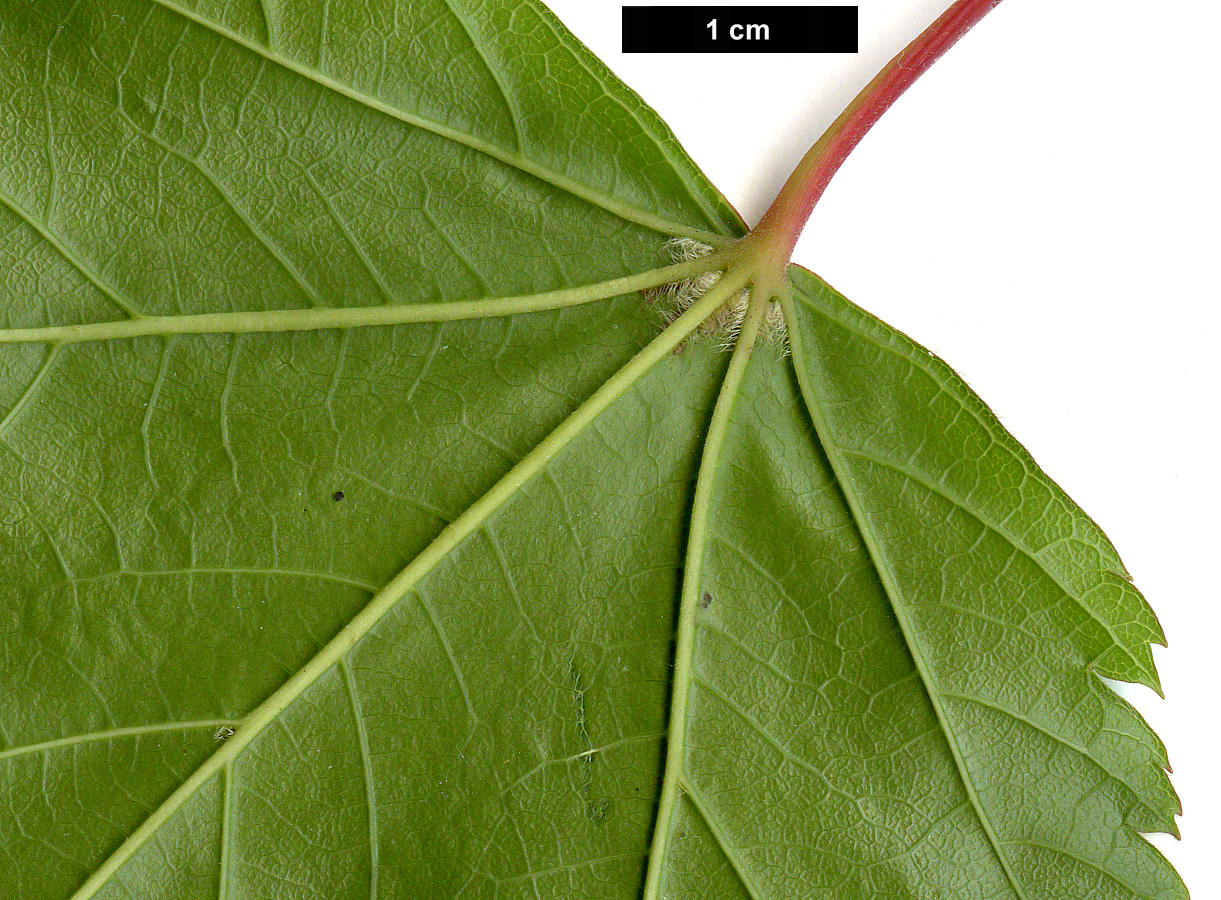Acer acuminatum
Sponsor
Kindly sponsored by
a member of the International Dendrology Society
Credits
Article from Bean's Trees and Shrubs Hardy in the British Isles
Recommended citation
'Acer acuminatum' from the website Trees and Shrubs Online (treesandshrubsonline.
Genus
Synonyms
- A. caudatum Wall., in part (1831)
Other taxa in genus
- Acer amplum
- Acer argutum
- Acer barbinerve
- Acer buergerianum
- Acer caesium
- Acer calcaratum
- Acer campbellii
- Acer campestre
- Acer 'Candy Stripe'
- Acer capillipes
- Acer cappadocicum
- Acer carpinifolium
- Acer 'Cascade'
- Acer caudatum
- Acer ceriferum
- Acer chapaense
- Acer chienii
- Acer circinatum
- Acer cissifolium
- Acer × conspicuum
- Acer cordatum
- Acer coriaceifolium
- Acer × coriaceum
- Acer crataegifolium
- Acer davidii
- Acer diabolicum
- Acer distylum
- Acer divergens
- Acer duplicatoserratum
- Acer elegantulum
- Acer erianthum
- Acer 'Esk Flamingo'
- Acer fargesii
- Acer fenzelianum
- Acer flabellatum
- Acer forrestii
- Acer franchetii
- Acer × freemanii
- Acer fulvescens
- Acer 'Gimborn'
- Acer ginnala
- Acer glabrum
- Acer 'Gold Coin'
- Acer granatense
- Acer grandidentatum
- Acer griseum
- Acer heldreichii
- Acer henryi
- Acer × hillieri
- Acer hookeri
- Acer hyrcanum
- Acer japonicum
- Acer kawakamii
- Acer komarovii
- Acer laevigatum
- Acer laurinum
- Acer laxiflorum
- Acer lobelii
- Acer longipes
- Acer macrophyllum
- Acer mandshuricum
- Acer maximowiczianum
- Acer maximowiczii
- Acer metcalfii
- Acer miaotaiense
- Acer micranthum
- Acer 'Mindavi'
- Acer 'Minorient'
- Acer miyabei
- Acer miyabei × campestre
- Acer monspessulanum
- Acer morifolium
- Acer 'Mozart'
- Acer oblongum
- Acer obtusifolium
- Acer okamotoanum
- Acer oliverianum
- Acer opalus
- Acer orientale
- Acer palmatum
- Acer papilio
- Acer pauciflorum
- Acer pectinatum
- Acer pensylvanicum
- Acer pentaphyllum
- Acer pentapotamicum
- Acer pictum
- Acer pilosum
- Acer pinnatinervium
- Acer platanoides
- Acer platanoides × amplum
- Acer platanoides × truncatum
- Acer × pseudoheldreichii
- Acer pseudoplatanus
- Acer pseudosieboldianum
- Acer pubinerve
- Acer pycnanthum
- Acer rubescens
- Acer rubrum
- Acer rufinerve
- Acer saccharinum
- Acer saccharum
- Acer sempervirens
- Acer 'Serpentine'
- Acer serrulatum
- Acer shenkanense
- Acer sieboldianum
- Acer sikkimense
- Acer 'Silver Cardinal'
- Acer 'Silver Ghost'
- Acer sinense
- Acer sinopurpurascens
- Acer spicatum
- Acer stachyophyllum
- Acer taronense
- Acer tataricum
- Acer tegmentosum
- Acer tenellum
- Acer tetramerum
- Acer tibetense
- Acer tonkinense
- Acer triflorum
- Acer truncatum
- Acer tschonoskii
- Acer turkestanicum
- Acer tutcheri
- Acer ukurunduense
- Acer velutinum
- Acer wardii
- Acer 'White Tigress'
- Acer wilsonii
- Acer × zoeschense
A small, deciduous tree with smooth, purplish young stems. Leaves three-lobed, or five-lobed with the basal pair of lobes very small; blades 31⁄2 to 51⁄2 in. long and about as wide, lobes triangular, prolonged at the apex into tail-like points which are often strikingly long and slender, sharply toothed, often doubly so, the midrib and main nerves of the under-surface covered at first with whitish or yellowish hairs but becoming glabrous except for hairs in the axils of the nerves near the base; leaf-stalks 13⁄4 to 4 in. long, covered with white down at first, later glabrous or remaining hairy near the apex. Male flowers in corymbs. Fruits in simple lax racemes 4 to 7 in. long, borne on pedicels 3⁄5 to 11⁄5 in. long; wings of fruit diverging at an acute angle, 11⁄8 to 13⁄4 in long with the nutlet, 1⁄3 to 1⁄2 in. wide.
Native of the W. Himalaya from Kashmir to Kumaon; date of introduction uncertain. For the reasons explained in the note, this species has been much confused with A. papilio (A. caudatum sensu Rehder) but is distinguished from that species by the soon glabrous leaves, the corymbose male inflorescence, and by the fruits being borne in long, lax racemes on pedicels much longer than in A. papilio; the fruits are also larger, with less spreading wings.
Acer acuminatum is represented in the maple collection at Kew by a specimen 18 ft high, raised from seeds received under the name “A. pentapomicum”.
Footnotes
Note: A. acuminatum was described by David Don (Prodr. Fl. Nepal., p. 249 (1825)) from a specimen collected at ‘Sirinagur’ by Kamroop, one of the native collectors employed by Nathaniel Wallich, who was for many years the Superintendent of the East India Company’s Botanic Garden at Calcutta. Don took the name from one of Wallich’s letters. The name A. acuminatum does not occur in the so-called Wallich Catalogue (the ‘Numerical List’ of the East India Company’s herbarium which Wallich wrote), but under No. 1225 Acer caudatum there is material collected by Kamroop ‘Ex alpibus Sirinagur’, which agrees with A. acuminatum. Indeed, all the material under this number is A. acuminatum except for one sterile specimen which may be A. papilio. When Wallich came to describe his A. caudatum (Pl. As. Rar., Vol. 2, p. 4, p. 28 and t. 132 (1831)), he cited the collections he had enumerated under No. 1225 and therefore A. caudatum Wall. consists, in part, of A. acuminatum.
From the Supplement (Vol. V)
A. acuminatum is a dioecious species, allied to A. argutum and A. barbinerve. It is now known to extend farther east than Kumaon, having been collected recently in various parts of Nepal. There is an example in the Edinburgh Botanic Garden, measuring 52 × 31⁄2 ft (1985), and there are young plants at Wakehurst Place, Sussex, from seeds collected in eastern Nepal (Schilling 2286).





